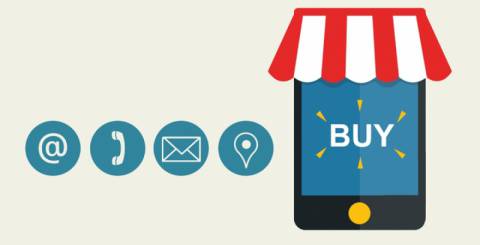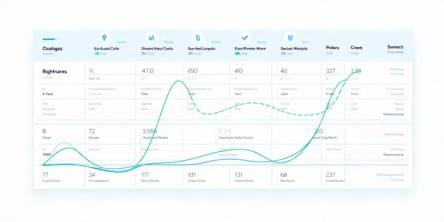Leverage Location-Based Technologies to Innovate Outdoor Marketing Campaigns

Over the past several years, the surge in mobile devices, followed by advancing technologies, has opened ways for location-based marketing. Therefore, sectors such as banks, food, retail, and real estate today use location-based applications and technology platforms to communicate with consumers in a more personalized way.
Such local marketing helps to improve the overall customer experience and increase business revenue. However, many online and offline businesses are still not leveraging this modern approach to meet next-gen customer needs. The time has come when they must understand the importance of location-based mobile marketing to stay at the top of the competition.
Though why location marketing is essential for businesses?
Location-based marketing, also known as geomarketing, has become a vital part of any successful marketing strategy. It helps businesses to market their products and services to people based on their device location. This service is much more than the necessary GPS-based technology as it helps to connect with consumers on a more personalized level.
For instance, when a customer searches for nearby eateries using the mobile device’s location, a marketing tactic like geo-conquesting can help a restaurant to send offers to that customer. As a result, the customers will get specific service at discounted rates, and the business strategy will be successful in increasing profits.
Effective location-based marketing helps to gain significant benefits over traditional marketing, such as:
- Target potential customers at specific locations, which improves the success ratio
- Attract new customers while enhancing the experience of existing customers
- Boost the in-app conversations to increase engagement
- Improve customer relationship with a more personalized conversation
- Increase business revenue
Top Technologies Used for Location-Based Marketing
- GPS: Global Positioning System is the most popular and widely used satellite-based navigation system. A GPS receiver detects the geolocation & time information of the device on which GPS is ON and helps the company to send special offers to the customer. For instance, when a customer visits at one of the chain cafes, he will receive an invitation on the GPS-enabled mobile application to approach newly opened partner restaurant and win a bonus. When the customer visits the place, he will receive a bonus coupon or discount offer through the app.
- Wi-Fi: Wi-Fi technology provides high-speed Internet connections through radio waves. This wireless networking technology is used for indoor data streaming and collections. It helps the retailers to notify the customer who enters a store to browse the online showcase of products with a high-speed connection. Based on the permissions the customer grants on his device, the user’s data are incorporated to assist in online activities and engage for various services.
- Beacon: Beacons are less expensive and easy to install compared to other mechanisms such as GPS, Wi-Fi, and more. A tag can be placed at any particular shelf in the store where retailers want to provide special offers and engage more customers. For instance, a beacon can detect the presence of customers standing for a few minutes in front of a bookshelf. It then can send a pre-order discount for coming-soon books in that genre on their mobile phones. However, the customers need to enable Bluetooth on their devices, and the stores need to put boards that would indicate customers to do so if they want to avail exclusive discounts.
- Li-Fi: Li-Fi is ideal to use where enormously high speed is needed, especially for short distances. When a mobile device comes in a range of the LED spotlight of the Li-Fi equipment, push notifications can be sent to the customer for offers and discounts. It is also possible to post short videos or 3D models of the items on display through Li-Fi technology.
- Geofencing: Geofencing is an incredibly valuable location-based marketing tool. It helps business owners to run marketing campaigns for customers within a specific sector of land. When a customer is present or enters in this location boundary, they receive accurate, targeted messages with offers for business services and products. This technology is widely used in open-air events and in-store marketing strategies.
Those, as mentioned above, as well as other emerging location-based technologies, have created more significant opportunities amidst challenges. Companies today must determine which location-based marketing strategy is ideal for their specific business.
Identify the needs of your potential customers, evaluate the effectiveness of your services, and then turn this data into interactive local marketing strategies across devices and platforms. As part of this, an experienced app development partner can help to build tailor-made geo-based apps according to the required functionalities.
Similar Articles
Building lending software isn’t just a technical project—it’s a business decision. Whether you're a fintech founder or part of a traditional lending institution trying to go digital, three questions will shape everything that follows
Learn why robust security is crucial for super app development. Explore key strategies and best practices for mobile app development security.
Walkie-talkies with an extensive reception capacity have changed significantly when it comes to portable communication by displaying cutting-edge features with seamless connectivity that covers more than just the state
USB-C technology has revolutionized the way we charge our devices, offering faster charging speeds, higher power delivery, and universal compatibility across multiple devices
Discover expert mobile app development strategies to create a viral app that attracts users and boosts engagement
Optimize app localization for iOS users across the EU with language, cultural, and regulatory adaptations. Engage users and boost retention with these tips!
Discover the top 10 mobile app development trends of 2024! Explore 5G, AI, AR/VR, blockchain, and more to stay ahead in the ever-evolving app development landscape.
With its triple-lens design and fantastic photo and video quality, the iPhone 11 Pro Max is extensively acknowledged for its superior camera system. But problems can occur with also one of the most advanced technologies. If you're having issues with the iPhone 11 pro max camera lens, knowing the typical problems and how to repair them
Protect your app from threats with AppSealing's robust, all-inclusive security solution. Safeguard user data, ensure compliance, and maintain top performance.









